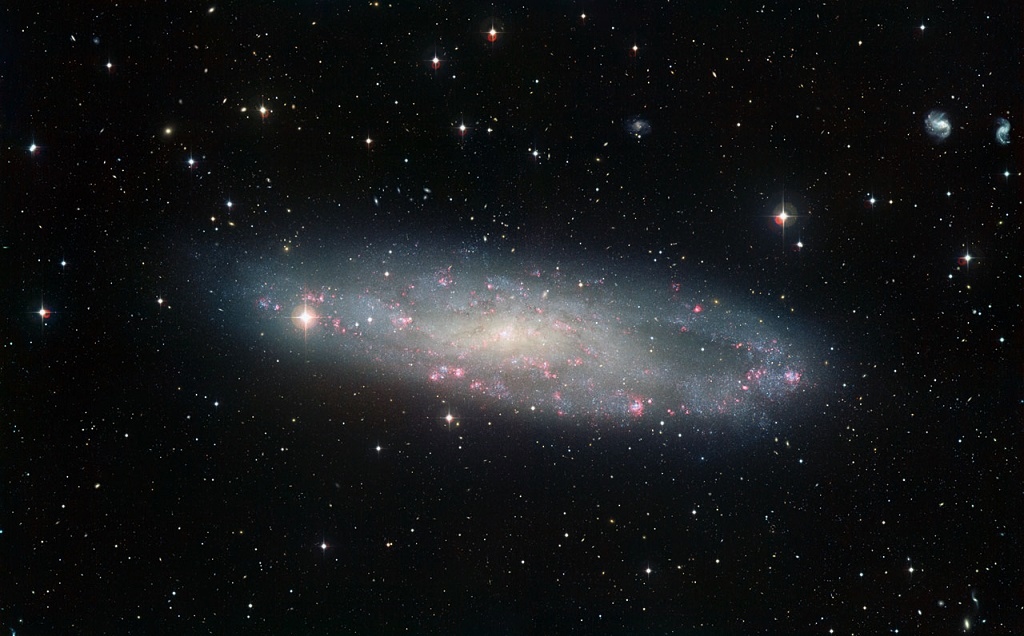







| BOOKS | F. A. Q. | ARTICLES | TALKS | ABOUT KEN | DONATE | BEYOND OUR KEN |
|---|
By Ken Croswell
Published on New Scientist (August 20, 2014)

A dark hole appears on the right-hand side of this galaxy's disk. Credit: European Southern Observatory.
A giant clump of dark matter may have smashed into a nearby galaxy and punched a hole in its starry disk.
The victim is NGC 247, a small spiral galaxy 11 million light-years away, which sports a void that spans a sixth of its diameter. The void does harbor some stars, but a new study of Hubble images found they are on average about a billion years older than those surrounding the void.
Stars form when swirling gas coalesces, so the void's existence suggests the region was robbed of its gas. "Clearly, something caused this," says Ata Sarajedini at the University of Florida in Gainesville. "But there's no smoking gun." No visible galaxy lurks nearby that could be the culprit.
Instead, the scientists invoke an invisible galaxy made of dark matter and a touch of gas (Monthly Notices of the Royal Astronomical Society). When this "dark subhalo" hit NGC 247, its gas pushed aside the galaxy's gas, compressing it into a ring of new stars.
A ring of bright stars surrounding the solar system, called Gould's belt, could be evidence that a similar dark subhalo smacked into the Milky Way 30 million years ago.
Ken Croswell earned his Ph.D. in astronomy from Harvard University and is the author of The Alchemy of the Heavens and The Lives of Stars.
"An engaging account of the continuing discovery of our Galaxy...wonderful." --Owen Gingerich, The New York Times Book Review. See all reviews of The Alchemy of the Heavens here.
"A stellar picture of what we know or guess about those distant lights."--Kirkus. See all reviews of The Lives of Stars here.
| BOOKS | F. A. Q. | ARTICLES | TALKS | ABOUT KEN | DONATE | BEYOND OUR KEN |
|---|